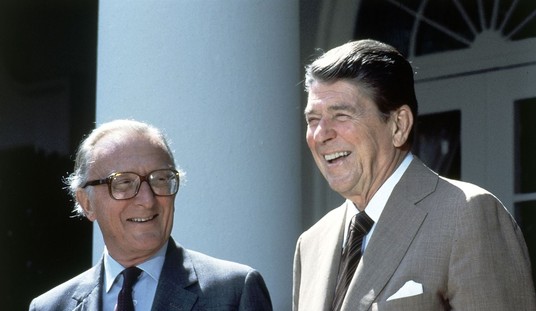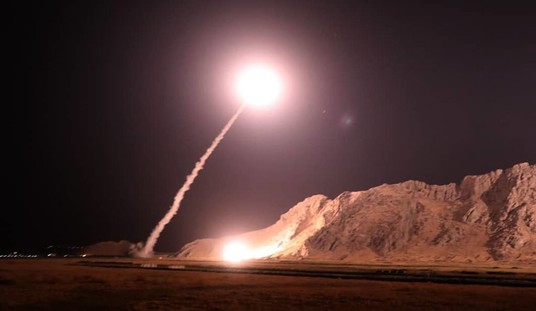On April 20, 2010, an explosion and fire on the Transocean drilling rig Deepwater Horizon caused the deaths of 11 rig workers. The subsequent blowout flowed uncontrolled to the Gulf of Mexico, ultimately spilling an estimated 5 million barrels of crude oil over the next 100 days. The regulatory aftermath continues to this day.
“Vladimir” wrote dozens of diaries at RedState on the engineering, environmental, economic and political aspects of the spill and its aftermath. The first was “Please Pray for the Missing Eleven” published a year ago tomorrow. It was soon followed by “Why Was BP Drilling in 5,000 ft of Water?” which looked at the disconnect between our voracious appetite for hydrocarbons, and our relative lack of concern as to its source (as long as it’s available and affordable). Vlad’s diary “The Pro-Environment Anti-Environmentalist” recapped several earlier diaries, highlighting the contrast between the predictions of scientific doomsayers and journalistic hysterics on one hand, versus a solitary blogger with a smattering of knowledge of earth science on the other.
The anniversary is an opportunity to look back on what we’ve learned. For if a failure is to be anything other than pure tragedy, we must learn the lessons it conveys.
Our economy uses an incredible amount of energy – some 95 quadrillion BTUs in 2009. Efficient and affordable energy sources (especially oil, natural gas, coal and nuclear energy, which together account for 93% of our energy) are hazardous to deal with because they cram the potential for a large release of energy into a small volume.
Extracting and transporting that energy comes with risk. Politicians may talk about eliminating risk, but engineers know this is foolish, so they speak in terms of minimizing risk. If we as consumers and citizens insist on zero risk, we may as well all move back to mud huts.
Macondo was a singular event. Perhaps BP skimped on well design. Perhaps Transocean failed to maintain the BOP properly. But the fact remains that in 40,000 some-odd wells drilled since 1970, only 1,800 barrels of oil hit Gulf of Mexico waters from well blowouts, up until Macondo.
The reason that the factoid above always references “since 1970” is that is considered to be the modern era of offshore oil and gas regulation, post-Santa Barbara and post-Bay Marchand, two catastrophic blowouts offshore California and Louisiana, respectively. The 1970s saw the development of the “Surface-Controlled Subsurface Safety Valve” (SCSSV), a sort of emergency valve designed to close in case of a catastrophic event, like an explosion or hurricane. SCSSVs did their job admirably during the hurricanes of 2005 and 2008.
The oil industry learns its lessons.
How much have we learned in a year? Certainly new standards will be in play for deepwater well design. Critical well control systems like blowout preventers and riser disconnect packages will be redesigned and properly maintained. Two new systems for emergency deepwater containment will be available to attempt well containment if needed.
No need for a “boot on the neck”, Mr. Salazar. We may be a bunch of Aggies and Okies and good ol’ boys from LSU, but don’t make the mistake of thinking we’re stupid. No one wants to risk putting himself and his employer through that. As BP proved, the stakes of failure are simply too high.
BOEMRE is looking to greatly beef up the ranks of its inspectors. All well and good, but don’t expect that to be a panacea. BOEMRE inspectors are like the state troopers of offshore operations. They don’t certify results (like a building inspector might when you build a house). They write tickets, they don’t direct the activity.
To extend the analogy a bit further, consider the state trooper in highway safety. We ask troopers to monitor operations. They don’t design the highways or determine the speed limits. They don’t design cars or tire treads. All that is done by engineers.
There have been spectacular engineering failures before, like the Tacoma Narrows bridge collapse in 1940 and the Hyatt Regency walkway collapse (which killed 114 and injured 216 dancing partiers) in 1981. In each case the profession has used the failure to understand the deficiencies of design and to promulgate new design standards. The petroleum industry would be no different in its forensic work.
But the process was subverted by government.
The first wave of “SWAT team” inspections of deepwater drilling operations found only a couple of very minor problems on two of 33 rigs. Regardless, the deepwater moratoria were imposed under the supposed cover of an endorsement by the National Academy of Engineering, which endorsement was loudly repudiated by the NAS panel. The moratoria were not supported by Sen. Bob Graham or William Reilly, co-chairs of the President’s packed-with-environmental-lawyers Oil Spill Commission. Rafts of new requirements and standards were imposed by BOEMRE fiat before the exact nature of the BP failure had even been determined.
Of the ten “new” permits that have been approved since February, only one is for a brand new well that has been permitted since the disaster. Most have merely served to renew activity on wells that were in progress a year ago.
Even though shallow water drilling presents a minuscule environmental risk compared with Macondo’s giant oil blowout, activity by shallow water operators remains moribund. One reason is the permitting slowdown, but operators also fear that Congress may set financial guarantee requirements so high that they will not be able to continue in the game.
As a result of delayed rig and permitting activity, we’ll produce on average 330,000 barrels per day less in 2011 than was expected we would one year ago. Next year, that figure will jump to 550,000 barrels per day. That’s 10% of domestic crude oil production.
A year later. In some ways, we’ve learned a lot; in others, nothing at all. That’s a tragedy.
Vladimir is gone now, dead at the ripe old age of 6 and 1/2 years. I gently euthanized him one night, smothering him with a pillow as he slept. His work goes on.
Cross-posted at stevemaley.com.














Join the conversation as a VIP Member